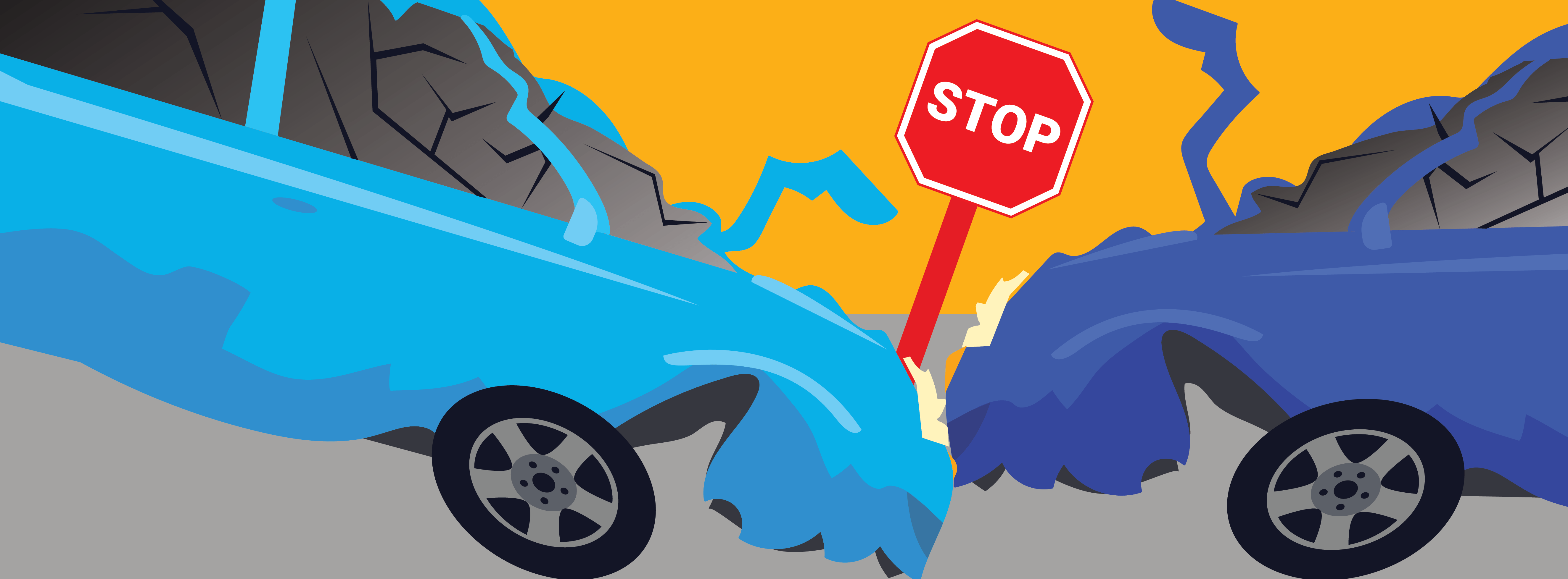Most teenagers are looking forward to the day they’ll get their driver’s license. While there’s no denying that driving can be fun and oftentimes necessary, it also carries inherited risks. One second of inattention, and you could make a fatal mistake.
Teen drivers face a higher risk of accidents than any other age group. This is largely due to their lack of experience, but other factors come into play, too.
For example, teenagers are more likely than older drivers to give in to peer pressure and exceed the speed limit. Plus, they often lack the ability to recognize and avoid dangerous situations on the road.
Given these aspects, it makes sense to practice defensive driving and take proper safety measures, such as wearing a seatbelt. Furthermore, gaining experience by driving alongside a parent or another experienced adult can provide invaluable guidance, preparing young drivers to confidently and safely navigate the roads on their own.
In light of these considerations, understanding the risks associated with teen driving and adopting measures to enhance safety is vital for every young driver embarking on this exciting journey.
Traffic school can help you keep a clean driving record, prevent insurance increases, and more!
Car Accidents Are the Leading Cause of Death among Teens
According to the Centers for Disease Control and Prevention (CDC), car crashes cause an average of eight teen deaths per day, or 2,800 teen deaths each year. That makes them the leading cause of death among this age group, followed by homicide and suicide.
As the CDC notes, teenagers are three times more likely to get into a car accident than drivers over the age of 20. The risk is highest among teenage boys ages 16 to 19.
For reference, 1,866 male teens and 864 teenage girls died in car crashes in 2020, per the Insurance Institute for Highway Safety (IIHS). These numbers were even higher in the ’70s and ’80s when cars had minimal safety features and the driving laws were laxer.
In 2021, more than 2,376 teenagers, including 1,326 teen drivers, lost their lives in car crashes, reports the IIHS. About 13% of the accidents that resulted in teen passenger deaths occurred when a teenager was driving.
Assuming you survive a car crash, you could still end up with serious injuries.

According to the CDC, about 227,000 teens were injured in car accidents in 2020. Some injuries have devastating consequences, such as permanent brain damage, partial or full paralysis, or the loss of a body part.
Read: All California Road Signs and Their Meanings
Why Teenage Drivers Are at a Higher Risk for Accidents
Teenagers are not necessarily bad drivers. They simply lack experience and often don’t realize the consequences of their behavior on the road.
For example, most of us know that texting and driving don’t mix. When you’re on the road, you must be prepared for the unexpected and pay full attention to your surroundings.
However, many teen drivers underestimate or are not aware of the risks involved. Due to their age, they’re more prone to distractions and tend to engage in reckless behaviors.
Now let’s take a quick look at the main risk factors for teenage drivers.
Lack of Driving Experience
Teen drivers are eight times more likely to get involved in a car crash during the first three months of licensure compared to the previous three months on a learner’s permit, per the National Institutes of Health.
During this period, they are also four times more likely to engage in reckless behaviors like speeding or crossing against a red light.
Again, it’s often their age and lack of experience that fuel these behaviors.
Experienced drivers can spot hazardous situations more easily and know how to handle a vehicle appropriately. They are also better prepared to deal with distractions and make quick decisions on the road.
Developing these skills takes time and practice. Teenage drivers simply don’t have the ability to assess and handle high-risk situations.

Distractions
A 2019 survey found that nearly 40% of high school students texted or emailed while driving at least once over a 30-day period. Those same students were also more likely to engage in other high-risk behaviors, such as driving after drinking or not wearing a seatbelt.
According to the above survey, 9% of teen drivers ages 15 to 20 who got involved in fatal car accidents were distracted at the time of the crash.
By comparison, only 6% of drivers ages 21 to 24 and 7% of those ages 25 to 34 were distracted when the accident occurred. This percentage was significantly lower among older drivers.
However, distracted driving isn’t limited to texting. Other activities, such as talking on the phone, adjusting the radio, using the GPS, or eating while driving, count as distractions, too. In fact, California’s cell phone law states that teens can’t use electronic devices while driving at all, even in hands-free mode.
Speeding
The National Safety Council (NCS) reports that speeding was responsible for 79% of single-vehicle crashes involving young drivers between 2007 and 2013.
Another study found that 15,510 teenagers lost their lives in car accidents between 2015 and 2019. More than one-third of those crashes involved speeding.
As the researchers note, speeding-related deaths are more common among teen drivers than those over the age of 20. The risk of a fatal crash increases with each additional passenger. This could be due to the fact that passengers are a distraction for some drivers.
Peer Pressure
Many teenage drivers have their friends or colleagues in the car with them. They go together to school, to the mall, or on trips, enjoying their newfound freedom.
The problem is that driving with other teens in the car can lead to distractions. Moreover, some teenagers engage in risky behaviors, such as speeding, to please or impress their peers.
The AAA Foundation for Traffic Safety found a direct link between the number of teen passengers in a car and the risk of a fatal crash.
Drivers ages 16 or 17 who carry a younger passenger have a 44% higher risk of death per mile driven than those without passengers.

The risk of death per mile driven quadruples when carrying three or more passengers under 21 years old.
By comparison, teen drivers who carry a passenger over the age of 35 are 62% less likely to get involved in a fatal crash than those carrying no passengers.
This doesn’t mean you should drive alone; rather, try to minimize distractions and don’t give in to peer pressure.
Focus on the road ahead, and pay attention to your surroundings. Avoid carrying inebriated passengers, as they are more likely to act wildly and distract you from driving safely.
Fatigue
Sleep deprivation and fatigue can affect any driver, regardless of age. However, teenagers are notorious for skimping on sleep in an attempt to juggle school, work, and social activities.
According to a 2018 study, drowsy driving was responsible for 8.8% to 9.5% of all crashes that occurred in six locations across the U.S. On a similar note, sleepiness contributed to over 10% of car crashes. About 14% of accidents involved drowsy drivers ages 16 to 19.
Drowsy driving carries pretty much the same risks as driving under the influence of alcohol, notes a 2012 study published in JAMA Internal Medicine. This explains why most crashes occur at night or early in the morning.
Impaired Driving
It goes without saying that you shouldn’t drive after drinking alcohol or using drugs, no matter your age. Unfortunately, some teenagers underestimate the dangers of impaired driving.
According to the NSC, 22% of drivers ages 15 to 20 involved in fatal crashes in 2021 had a blood alcohol content (BAC) of 0.08 g/dL or higher. While it’s illegal for teenagers to consume alcohol, this doesn’t stop them from doing it.
Beware that even soft drugs can impair your ability to drive. For example, marijuana affects reaction time, mental focus, coordination, and other skills required for staying safe on the road. Its impact on young drivers is often similar to that of alcohol consumption.

The number of fatal car crashes involving cannabis doubled between 2000 and 2018. That’s not surprising, given that more than 9% of teenagers ages 16 to 20 admitted to driving under the influence of cannabis.
Not Wearing a Seatbelt
According to the Children’s Hospital of Philadelphia, seatbelts saved more than 374,000 lives between 1975 and 2017. On a similar note, the CDC reports that wearing a seatbelt can lower the risk of fatal injuries in a crash by at least 50%.
Yet, 43% of teenage drivers say they don’t always wear a seatbelt. What’s more,
52% of all teen drivers who died in traffic crashes in 2020 were not wearing a seatbelt, per the Children’s Hospital of Philadelphia.
Wearing a seatbelt is the very least you can do to stay safe on the road. This habit can make the difference between life and death, so why take unnecessary risks?
Nighttime and Weekend Driving
Driving at night poses further risks to teenagers.
According to the NSC, 17% of all fatal crashes involving 16- and 17-year-olds occur between 9 p.m. and midnight. Another 13% occur from midnight to 5.59 a.m.
Weekend driving isn’t safer either, points out the IIHS.
About 16% of vehicle crashes involving teens occur on Fridays, 18% take place on Saturdays, and 17% happen on Sundays.
By comparison, only 11% of all crashes involving teenagers occur on Wednesdays.
Depending on where you live, the streets may be less crowded on weekends because most people don’t go to work. However, they may get busy again in the evening when people go out to eat or party.
And let’s not forget that many teenagers and adults alike drink on weekends, even if they know they will be driving later. This factor alone can increase the risk of having a crash.
Demographics and Other Risk Factors
We’ve already mentioned some of the risk factors that could lead to car crashes among teen drivers, but there are several other aspects to consider. These may include:
- Age
- Gender
- Personality
- Certain health conditions
- Stress levels
- Vehicle age, make, and model
- Rural vs. urban driving
- The city or state where you live
For instance, IIHS data shows that 18- and 19-year-old teens are more likely to get involved in a car accident than younger teenagers.
The teen’s personality comes into play, too. Clinical research suggests that certain behavioral factors increase the likelihood of being involved in a car accident.
Let’s see a few examples:
- Overconfidence
- Thrill-seeking
- A susceptibility to peer pressure
- A higher risk tolerance
- A predisposition to aggression
As the scientists note, there also appears to be a link between stress and risky driving. Additionally, teen drivers with certain conditions, such as anxiety, depression, ADHD, or sleep disorders, are more likely to get involved in a car accident.

It’s also worth mentioning that some types of cars are less safe than others for teen drivers. Driving an Oldsmobile, Chrysler, Pontiac, Honda, or Chevrolet is more likely to result in a crash than other brands.
As expected, the vehicle’s age plays a role, too. For example, Oldsmobile and Pontiac cars, which are no longer produced, didn’t have the safety features included in modern cars.
Another factor to consider is the state in which you live. According to The Zebra, teenage drivers living in Michigan, Florida, Louisiana, Rhode Island, or Colorado have the highest crash risk.
The same goes for those based in Wyoming, which is considered the deadliest place in the U.S. for teen drivers. In this state, there are over 40 motor-related deaths per 100,000 teens. Next on the list is South Dakota, with a motor fatality rate of 36.8 per 100,000 teenagers.
Surprisingly, driving on rural roads poses higher risks for young people than urban driving.
According to the National Highway Traffic Safety Administration (NHTSA), 56% of fatal crashes involving teens occur in the countryside. This could be due to the fact that rural roads often have mud, ice, leaves, or uneven surfaces, making it harder to control the vehicle—especially when speeding.
Driving Technology Could Help Keep Teens Safe
Sometimes it’s simply not possible to prevent a car accident, but you can mitigate its impact.
One solution is to buy a newer car with advanced safety features like rear vision cameras and lane maintenance alerts. Some vehicles also come equipped with teen-specific safety technology, such as smart key fobs that limit speed.
These driving safety features may reduce the risk of fatal injuries and, in some cases, prevent crashes from occurring.
For example, automatic emergency braking (AEB) may help prevent 83% of rear-end crashes, including 57% of those involving teen drivers.
Lane departure warning (LDW) systems, on the other hand, may lower the risk of crashes by 11%. Vehicles featuring this technology are 83% less likely to be involved in a fatal collision.
Generally, newer cars have built-in driving safety features like:
- Intelligent speed assistance (ISA)
- Electronic stability control (ESC)
- Blind spot threat detection
- 360-degree cameras
- Top speed settings
- Belt-Minder
- Parking sensors
- Driver attention monitors
- Lane departure prevention
Some cars don’t have these features by default, but you may add them later on. For instance, you can buy and install a 360-degree camera or parking sensors even on older vehicles.

Apart from that, there are a couple of mobile apps aimed at helping parents keep their children safe on the road.
- An example is Chevrolet’s Teen Driver app, which enables parents to monitor their teens’ driving habits, set speed limits, and make buckling up mandatory.
- Another good choice is the Automatic PRO AUT-350, which enables users to identify car problems that could compromise the driver’s safety. The device syncs with an app that signals potential issues and keeps logs of your trips.
- Other apps, such as Driving Focus from Apple, will automatically turn off all notifications on your teen’s phone when they’re driving.
- Similarly, AT&T’s DriveMode will block all notifications as soon as the car reaches 25 miles per hour. Parents can install the app on their phones, too, so they receive alerts when their teens disable its safety features.
Teen Driver Safety Initiatives Every Parent Should Be Aware of
Most states have strict laws regarding drunk driving, speeding, the use of seatbelts, and other related issues. However, these legal measures are not always enough to stop teenagers from engaging in risky behavior.
As a parent, it’s your responsibility to help your child stay safe behind the wheel.
One option is to draft a parent-teen driving agreement. Use a parental control app to make sure your teen follows the rules.
Go one step further and encourage your child to enroll in educational programs aimed at teen drivers.
- For example, Florida and other states provide free webinars during Teen Driver Safety Week. In 2024, these events will take place from October 20 to October 26.
- The National Safety Council launched an initiative called DriveitHOME, which includes free weekly lessons and other resources for teenage drivers.
- Safe Kids Worldwide offers free resources for parents and their drivers aimed at increasing their safety on the road, so you might want to check them out.
- Another option is to enroll your teenager in traffic school if he gets a traffic ticket. This will allow him to better understand the state’s driving laws, best practices on the road, and how to stay safe. Going to traffic school will also mask one point from his California driving record.

Most importantly, discuss the rules of the road with your child. Encourage him to wear the seatbelt on every ride, practice with him at night and in bad weather, and limit the number of passengers allowed in the car.
Remember to lead by example. If you exceed the speed limit or don’t buckle up, you can’t expect your teen to follow the rules.
